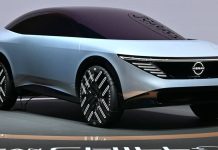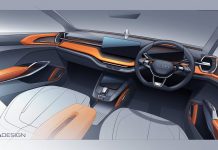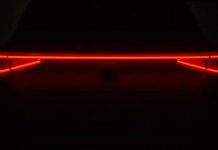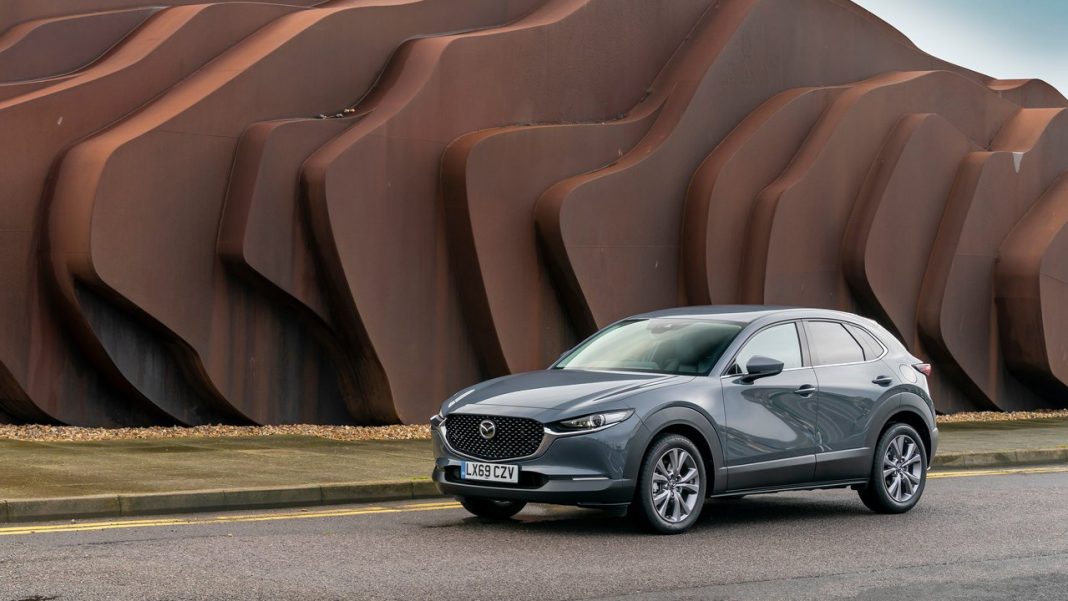Revealed at the 2019 Geneva Motor Show and available to order now, the CX-30 enters a new market segment for Mazda, slotting into the firm’s award-winning SUV range between the CX-3 and CX-5.
Following the launch of the all-new Mazda3, the Mazda CX-30 is the second model in the company’s next generation line-up and the second to feature the ground-breaking Skyactiv-X spark-controlled compression ignition engine. Combining the bold stance of an SUV with the sleek profile of a coupe, its styling is a sophisticated evolution of Mazda’s KODO design philosophy, while it’s spacious and versatile cabin ensures it has the practicality and comfort demanded by customers in this popular sector.
Available in five trim levels – SE-L, SE-L Lux, Sport Lux, GT Sport and GT Sport Tech – the new CX-30 features Mazda’s characteristic generous standard equipment across the entire range, and is offered in the UK with a choice of two petrol engines, both of which feature the 24v Mazda M Hybrid mild-hybrid system.
Familiar from the recently launched all-new Mazda3, the 122ps 2.0-litre Skyactiv-G engine features cylinder-deactivation and is exclusively matched to front-wheel drive with a choice of automatic or manual transmission across all five trim levels. Likewise, the ground-breaking Spark Controlled Compression Ignition (SPCCI) Skyactiv-X petrol engine is also offered across all grades with a choice of transmission. Additionally from Sport Lux upwards, the Skyactiv-X CX-30 is available with Mazda’s latest advanced i-Activ all-wheel drive system.
d laterally in previous body shell structures, Mazda has now added front-to-back connections, creating multi-directional ring structures that improve diagonal rigidity.
The front cowl side panel, front and rear damper attachments, and rear door opening have been positioned for maximum effectiveness, based on analysis of energy paths. As a result of this new multi-directional ring structure, the delay in the transmission of input energy to the diagonals stretching from the front to the rear has been reduced by 30% compared to previous body shell structures, with forces now transmitted between all four diagonal corners almost instantly.
This helps maximise the function of the dampers and tyres. By concentrating energy input from the road surface in specific locations and using the damping structure that serves as a buffer material to absorb it, the body effectively reduces vibration that would otherwise cause noise and does so without increasing vehicle weight. The Mazda CX-30 suspension system uses MacPherson struts at the front and a torsion beam setup in the rear. Input energy from the ground is communicated to the body via the suspension.
Traditionally, vehicle architecture has been designed to reduce the magnitude of forces conveyed to the sprung mass. With Skyactiv-Vehicle Architecture, however, Mazda has added a new concept -smoothing out the forces conveyed to the unsprung mass over the time axis- and, based on this, has completely redesigned the allocation of functions among the various components. While the suspension operates in a vertical direction, the suspension arm angle faces downward – in an inverted V shape- at all times, so that the inertial force of the sprung mass pushes the tyres down toward the ground. Meanwhile, the use of a spherical bush ensures that the transmission of energy is perfectly aligned with no slippage, making it easier for the attachment of the suspension arm and link to rotate smoothly.
A more efficient functional arrangement has also been adopted for the tyres. In a radical departure from Mazda’s previous approach, which focused on increasing the vertical stiffness of the tyres, the company has softened the side walls and reduced stiffness. Doing so has allowed Mazda to plan for the adoption of its unique vehicle dynamics control technology, G-Vectoring Control (GVC), right from the initial conceptual stage of platform development, resulting in a more effective functional allocation.
G-Vectoring Control adjusts engine torque in response to steering input in order to control lateral and longitudinal acceleration G-forces in a unified way and smoothly optimise the vertical loading of each tyre during cornering. The latest GVC Plus system is standard on the Mazda CX-30 and it introduces technology that further enhances handling stability by using the brakes to add direct yaw moment control to the conventional engine control of GVC.
As the driver steers out of a corner by returning the steering wheel to the centre position, GVC Plus applies a light braking force to the outer wheels, providing a stabilizing moment that helps restore the vehicle to straight line running. The system realises consistently smooth transitions between yaw, roll and pitch even under high cornering forces, improving the vehicle’s ability to accurately track sudden steering inputs and exit corners crisply.
In addition to improving handling in emergency collision avoidance manoeuvres, GVC Plus offers a reassuring feeling of control when changing lanes at high speeds on the motorway. When matched to all-wheel drive, the AWD system will maintain the existing front/rear torque distribution to prioritise better turning response through the GVC Plus unit engine torque control. After the initial turn-in, the AWD system gradually increases the amount of torque sent to the rear wheels to realise neutral steering and more stable vehicle motion.
Harmonisation with GVC Plus also substantially improves rear torque response and linearity with respect to the driver’s accelerator inputs. When accelerating, more torque is distributed to rear tyres where vertical load is increasing. When decelerating, more torque is delivered to the front wheels to maximize the traction performance of all four wheels. It also improves controllability, so the vehicle responds faithfully to the driver’s intentions.
The Mazda CX-30 also adopts a new brake calliper design that ensures constant clearance between the brake pads and discs at all times, even after hard braking. This reduces rolling resistance while increasing control. The resulting vehicle behaviour enables cabin occupants to maximise their innate ability to maintain balance and enjoy a comfortable driving experience.
While the dynamic elements of handling, ride, braking and steering sat high on the priority list, the Mazda CX-30’s development also focused heavily on NVH performance with the aim of class-leading refinement. The NVH development focused on three sound characteristics that directly impact cabin occupants: volume, changes in pitch and tone over time, and the direction from which sounds originate.
In addition to conventional measures aimed at reducing noise by suppressing it at the source, the goal for the Mazda CX-30 was to control changes in the quality and directionality of sounds after they enter the cabin to provide a ‘high-quality quietness’ that is satisfying to all cabin occupants.
Mazda improved insulation performance without increasing weight by adopting a ‘two-wall’ structure that leaves space between the floor carpeting and the body panel beneath it, and between the door trim and inner panel. In addition, the amount of fibre material on the backside of the floor carpet was adjusted to match specific locations, to achieve optimum density across the entire floor. The number of holes in the carpeting was also reduced wherever possible to further improve sound insulation performance.
Sound-absorption added to the headliner and floor mats effectively suppresses high-frequency sound. Tyres with optimised vertical spring action absorb vibrations related to increases in noise volume through changes in road surface. In addition, increased structural rigidity at possible entry points further helps prevent vibration from penetrating the cabin.
The side walls and mat of the loadspace have been soundproofed, and holes in the mat eliminated to improve quietness. A small gap around the extractor chamber filled with sound absorbing material further enhances boot space soundproofing without detriment to the chamber’s performance. The introduction of a seal inside the tailgate parting lines significantly reduces wind noise.
The optimisation of the engine mounts suppresses unpleasant vibrations during restarts, which are gentle yet clearly audible to cabin occupants. Of particular note is the belt-driven ISG of the Mazda M Hybrid system. When stopping, the ISG enables the system’s motor to move the pistons to a position where they will start again smoothly regardless of the operating environment. Finally, the lag-free transmission of permissible sounds and vibrations fundamental to the driving process helps create a more reassuring and comfortable cabin environment.
Safety
The Mazda Proactive Safety philosophy guides all the company’s research and development efforts in safety performance. It drives advances in every area from safety fundamentals, such as the driving position, through passive safety features, to advanced i-Activsense innovations. The Mazda CX-30 is equipped with numerous safety technologies born from these research endeavours.
Awarded the maximum five-star rating by Euro NCAP in its latest series of tests, the CX-30 performed strongly in all four test categories: Adult Occupant, Child Occupant, Vulnerable Road User and Safety Assist. The rating is a result of three key factors: the adoption of the very latest Skyactiv-Vehicle Architecture, which features a high-rigidity, impact-absorbing yet lightweight bodyshell; a wide range of advanced i-Activsense safety technologies, which help drivers identify potential risks and reduce the likelihood of damage or injury; and high standards of pedestrian protection performance.
With an exceptional 99% score in the Adult Occupant category, the Mazda CX-30 achieved maximum points for frontal full-width impact, as well as for both barrier and pole side impacts. Mazda’s Smart Brake Support system also gained full marks in low-speed tests, with collisions avoided in all scenarios. An excellent Child Occupant score of 86% included full marks in Child Restraint System installation checks and for child protection in the lateral impact test. Vulnerable Road User (pedestrian safety) tests achieved a score of 80%, with maximum points for pedestrian leg and pelvis area protection. A score of 77% in the Safety Assist category recognises the efficiency of the new Mazda CX-30’s comprehensive suite of i-Activsense safety features.
With a laser focus on passive safety and strength, the Mazda CX-30 benefits from a remarkably strong and lightweight body structure comprising approximately 30% ultra-high-tensile steel rated 980 MPa or higher, and including the strategic application of 1,310 MPa-class steel. This combines with a new perimeter beam, newly designed B-pillars that are both stronger and lighter, and rear side frames that deform in an accordion-style pattern to create a strong body that can withstand impact force and a frame structure that effectively absorbs energy.
The body uses Mazda’s distinctive multi-path structure and straight framework. It also adopts a perimeter beam that reduces the impact force generated when structural components of an opposing vehicle make contact with the Mazda CX-30 in an offset collision. In such a collision, where a small amount of overlapping occurs with the opposing vehicle or obstacle, the material used on the right and left ends of the perimeter beam effectively guide energy to the load paths. This combines with a bendable front frame structure that takes the brunt of the impact and then gradually absorbs its energy with optimum efficiency.
For side impact protection the CX-30’s body is built to take the brunt of impact energy from a variety of directions and locations, and to help minimise cabin deformation by dispersing that energy to the front and rear of the vehicle. The Mazda CX-30 is the first Mazda vehicle which hot-stamped material is first attached to a ridged reinforcing material before both are formed together into the B-pillar shape. The increased efficiency of this reinforced structure achieves greater strength while also reducing weight.
At the back, the rear side frames are designed to deform in an accordion-style pattern in the event of a collision. This makes it possible to double the efficiency of energy absorption over the structure previously used without increasing weight, while also achieving high levels of collision safety, dynamic performance and fuel economy.
Other passive safety highlights include the addition of a knee airbag in addition to front, curtain and front side airbags as standard equipment. By suppressing forward motion of the driver’s body in the event of a collision, the driver’s knee airbag contributes to fewer injuries to the driver’s legs, chest and abdomen. The CX-30’s front seats are designed to mitigate neck injuries by making the seats rigid and adopting a side frame designed to absorb energy. This reduces the chances and severity of neck injury by minimising the amount of head, chest and pelvis travel experienced in a collision.
The focus on passive safety also extends to the protection of pedestrians should the worse happen. An energy-absorbing space between the hood and engine is designed to mitigate injury to a pedestrian’s head should it contact the hood in the event of an accident. The inside of the hood also adopts an energy-absorbing structure with a pattern of parallel columns positioned closer to the hood surface. Impact energy is more directly absorbed in the initial moment of contact and then gradually diffused, enabling more rapid energy absorption.
To reduce the chance of injury to a pedestrian’s legs, the bumper adopts a plastic face with small ribs attached to the upper section along with a plastic lower stiffener positioned in front of the perimeter beam. By supporting the thigh and shins when contact is made and thereby softening the blow to the knees, this structure helps to reduce the chance of knee or ligament injuries caused by the legs bending.
As is demonstrated by the high score in NCAP’s Safety Assist category, the new Mazda CX-30 features a comprehensive suite of Mazda’s i-Activsense safety features designed to help the driver and mitigate or prevent accidents. In addition to a never before seen level of standard safety systems across the entire range, the GT Sport Tech Mazda CX-30 is equipped with three recently developed active safety features: Driver Monitoring, Front Cross Traffic Alert (FCTA) and Cruising & Traffic Support (CTS) systems.
The Driver Monitoring (DM) system uses both an infrared camera and infrared LED to observe the driver’s condition while driving. Specifically, it monitors how wide the driver’s eyes are open at any given time, the number of times he or she blinks, and also the angle of the mouth and face in order to determine the level of drowsiness or fatigue. It also monitors the driver’s line of sight and eye movement to determine when the driver is being inattentive. If the system judges that the situation has become dangerous, it activates the brake warning sound to alert the driver.
The infrared camera and infrared LED are mounted within the centre display’s bezel, which enables the system to monitor the driver day or night without its view being blocked by the driver’s hand movements when operating the steering wheel. The system is carefully designed to sound warnings only when needed so they cause no annoyances when driving normally.
When pulling away from a standing start, the Front Cross Traffic Alert (FCTA) system detects other vehicles approaching from blind spots at the front right or left of the vehicle and alerts the driver of their presence. It uses front side radars to monitor the left and right front diagonal areas the driver cannot easily confirm by eye. This helps prevent a common cause of accidents, such as when cars enter a T-junction with a partially obscured view.
Working in conjunction with the standard Mazda Radar Cruise Control, Cruising and Traffic Support (CTS) helps reduce driver fatigue by assisting with accelerator, brake pedal and steering operations when stuck in traffic. When active, CTS automatically adjusts vehicle speed to maintain a proper trailing distance while following the vehicle ahead. It also assists with steering torque to make it easier to maintain proper lane position through bends. The benefits of CTS are particularly effective and help support a safer, more reassuring and more comfortable driving experience when having to perform numerous fine adjustments while driving in traffic jams. The system operates at speeds of between 0-38mph for automatic transmission models and 19-38mph for manual transmission models.





























